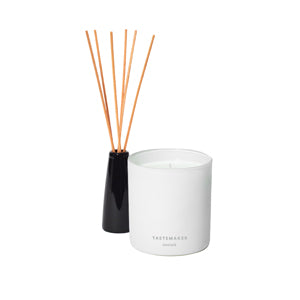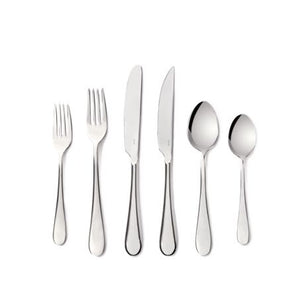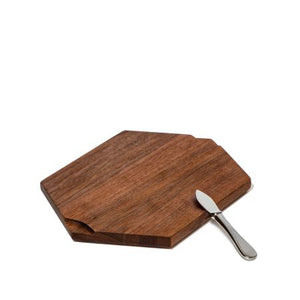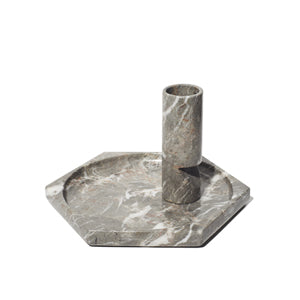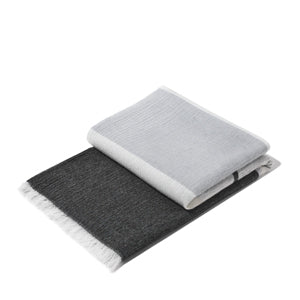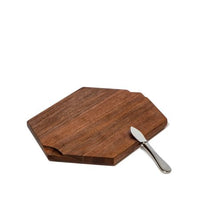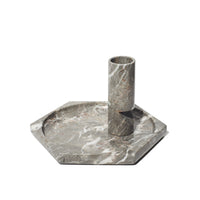
In one hand is a bumpy gourd, the other, a bunch of beets. What you’re standing in is not the farmer’s market of sweaty days past. Things look a bit more…bulb-y. Root-ish. So many—what’s that word?—tubers. You’re hosting a dinner party in four hours. There’s an office potluck next week. And your summer-veggie lovers seem like a distant fling.
So, what’s your fall move? What vegetables are in season now, anyway? It’s a bit harder to pinpoint the cream of autumn’s vegetable crop, and this is where we come in. We’ve rounded up the quintessential quartet, aka our four fall favorites, along with advice on how to pick, prep and cook each one. Oh, and we created a veggie finder. Because how else would you discover your seasonal soulmate? But, is it scientific, you’re wondering? Well, science is so subjective these days. It is, however, proven to find The One for fall. Or maybe you’ll love two or three, because you’re that modern. All you have to do is follow your heart below.


1. Beets
The unsung heroes. The subtle superstars. The bulbous beauties. Beets are truly underrated. Not only are its rainbow hues the stuff of #foodart dreams (*buys white dinnerware*), this super-versatile root veg transforms into endless five-star dishes. When veggie hunting, look for firm bulbs with the brightest colors and smooth, blemish-free skin. Spot a beet with a leafy top? Make a beeline for bulbs with only bright green (no brown) leaves attached. That means they’re at peak-level freshness and bonus: the leaves are also delicious.
When it’s prep time, you’ll probably want to wear gloves as that beautiful beet juice will stain just about anything. Scrub beets really well and dunk the leaves in water a few times to remove all of the dirt. Choose a darker wood cutting board to work on—it’ll stand up better to the beet juice. After, try to wash it right away to prevent any stains. If it did get splotchy and red, don’t sweat it. This trick should clean it right up: cut half a lemon, sprinkle coarse salt all over the stains, and rub the lemon, cut-side down, over salt until the stains are gone. Et voilà, back to its dark wooden glory.
Cook it!
Have you ever met a sauté you didn’t like? Probably not, but beet greens make your next round a fast and delicious one. The slightly bitter taste also makes for a zesty salad base. For a classic side, roasted beets always fit the bill.
- Quarter a few bulbs
- Toss into a pan with olive oil, salt and pepper
- Into the oven they go
Next, an all-time-favorite. The 2-minute beet salad:
- Start with a hack: canned or pickled jarred beets
- Dice and mix with olive oil, salt, pepper and goat cheese crumbles
Finally, take a beet at snack time.
- Combine hummus, roasted beets, and tahini
- Give it a whip in your food processor
- Double dip
Swap with: Rainbow carrots. Also a root vegetable, they roast just the same, while still adding feed-worthy color to your plate. P.S. Swiss chard and spinach have that same peppery taste as beet greens, so sub them in a pinch (with a pinch of salt and pepper.)

2. Kohlrabi
Want to get weird? This odd-looking veg will definitely spice up your kitchen life. But what is kohlrabi, exactly? Very strange and very versatile, kohlrabi, aka cabbage turnip in German, is part of the wild cabbage family. OR, is it part of an alien family?! To humans, these shapeshifters appear as light green or purple in color. And to find out-of-this-world, ultra-fresh kohlrabi, look for bulbs with crisp green leaves attached (just as you would for beets). Bigger grocery stores might only have leafless bulbs, but don’t stress. Those are still great to cook with. Also, stick with smaller bulbs. They’ll taste a bit sweeter and milder than the big guys, but still have a hint of zing.
Prep time! Break out your sharpest knife (and knife skills) to cut away all of the tough, stringy skin. A peeler probably won’t work here. Keep in mind that the outer skin is usually pretty thick, so once you’ve removed it you might end up with a lot less vegetable. Double up when you buy it to make sure you have enough. And another hot tip: if you’re not using the leaves right away, chop the stalks from the bulb and wrap a wet paper towel around them. Store in a plastic zip-top bag in the fridge. This will keep those tasty greens nice and crisp for a few days.
Cook It!
Now that you can name this curiosity, wondering how to cook kohlrabi? Plot twist: there are tons of simple, delectable recipes that require no cooking at all. Just the raw veg in all its fresh, crunchy goodness. Ditch the typical crudité suspects and slide in some raw kohlrabi.
- Remove the outer skin
- Chop the remainder of the bulb into finger-food stalks or dip-carrying slices
If you’re feeling ambitious, elevate your slaw game.
- Grate your kohlrabi
- Mix with shredded carrots and cabbage
- Top it all with a zesty vinaigrette
Wild-card hack: shake up your grandma’s latke recipe and substitute grated kohlrabi for potatoes. It cooks like spuds and has the same texture. You’ll trick them real good at Hanukkah with this healthier version.
Swap with: Cabbage, kohlrabi’s cousin, since it has the same crisp and crunchy bite. Broccoli stems have a similar fresh, subtly-sweet taste and texture, so those would work too. Small turnips and radishes are slightly peppery like kohlrabi, also making them lovely substitutes.

3. Sweet Potatoes
Ok, stay with us. This may seem like kind of an obvious choice, but that’s because sweet potatoes are actually pretty perfect. There’s almost nothing you can’t do with them. And sweet potato recipes are responsible for some of the best tried-and-true fall classics. The baked sweet potato. Sweet potato casserole. Sweet potato fries. Sweet potato pie! They’re heavy players in our fall rotation—those starchy, soothing hugs never fail to disappoint. You’ll find the finest tubers of the bunch (or barrel) if you pick small or medium ones. And look for glowing reddish-copper skin that’s firm and smooth.
Not using your spuds right away? You can store them for up to a week, but not in the fridge because it’s too chilly in there. Colder temps can cause a hard center to form in sweet potatoes. So, it’s best to keep them at room temperature in a cool, dark place. If they’ve grown little sprouts and become a science experiment, RIP. They’ve hung around too long—time to toss them. To prep, just wash and scrub each one really well under water to remove any dirt. It’s up to you (or the recipe) to peel them or keep the fiber-packed skin on.
Cook it!
Our #1 sweet potato move is…wait for it…fries!
- Keep the skin on and rinse
- Cut sweet potatoes into wedges or matchsticks
- Coat with olive oil, salt and pepper and bake those babies
Next up, start simple with a glorious toppings vehicle, headed straight to Flavor Town.
- Bake the sweet potato whole like a regular potato
- Experiment your heart out
- Go traditional and add sour cream and chopped chives
- Try something bolder and drizzle with a little spicy butter or labneh and za’atar
- Go all-out nuts: top with a poached or fried egg and avocado for a breakfast power play
By the way, you can speed up roasting time with this clutch shortcut.
- Put diced raw sweet potatoes in a bowl
- Cover with plastic wrap and poke a few holes
- Microwave on high for about 5 minutes or until they’re a little soft
Now they’ll roast or broil in the oven in a snap.
Swap With: Parsnips, since they mash and roast just as nicely, and share that slightly sweet, although nuttier, taste. Try butternut squash if you need a lighter, less-carby veg that’s still super flavorful. Myth buster: Yams are actually a very different vegetable than sweet potatoes and are mislabeled in most US supermarkets. Their skin is rough and brown, and the flesh is dry and not moist or sweet. However, you can sub in yams if you’re making roasted sweet potatoes; they’ll just taste a bit different.

4. Rapini
What is rapini, you ask? Well, maybe you know this double agent of green veggies as broccoli rabe, a leafier, lankier broccoli-look alike. But no matter what you call it, compared to most of the fall and winter vegetables in season now, it’s gleefully low key. And it’s this effortless factor that makes it a hometown hero. Part of its unfussy vibe, the entire veg is delightfully edible all at one go, from leafy top to stalk. No leaf saving necessary, as they’re part of the whole package. Rapini’s famous for its piquant, bitter taste. It’s this unique flavor that kicks up pasta and stands up against heartier steak or chicken.
While we’re here, we’ll settle the broccoli vs rapini debate. Although rapini looks a lot like a bushier broccoli sibling, it’s actually descends from the mustard family and is cousins with the turnip. Which explains why rapini greens are basically the same as turnip greens. When you’re on the hunt at the farmer’s market, look for thin, firm stalks topped by florets with tightly closed buds. These will be off-the-truck fresh. If you see bunches with lots of yellow spots or little flowers, they’re past their prime. Reason to love rapini #346: prep is so easy breezy. Just trim the stalks an inch or two to get rid of the tough ends, rinse and pat dry. Done!
Cook it!
*Chef’s kiss* Now, the essential rapini recipe:
- Blanch then sauté a fresh bunch with olive oil, garlic, salt and pepper
- Sprinkle some red pepper flakes for a spicy kick (then prepare for every flavor-packed bite about to hit your taste buds)
In addition to low risk-high reward sides, rapini is ride or die for Italian cooking. Try adding it to:
- Pasta with crumbled sausage for a weeknight dinner that sings (like an operetta)
- Paninis, pressed with melty provolone or mozzarella and thin cuts of chicken
If you’re up for a double-dog dare, amp up your pesto game by using rapini instead of basil for a deeper, zestier taste than the usual.
- Combine with: olive oil, garlic, pine nuts, salt and parmesan cheese
- Mix in a food processor or a small blender
P.S. Here’s how to speed up your rapini prep:
- After rinsing, roll this veg in a paper towel back and forth to soak up all the water
- Broil for 5 minutes on a sheet pan for perfectly crispy, charred leaves, and florets with tender stems
Swap with: Mustard greens, since they’re from the same family and share that particular bitter taste. If you need other sauté superstars, collard greens and Chinese broccoli leaves also make handy substitutes and taste like rapini, too.








